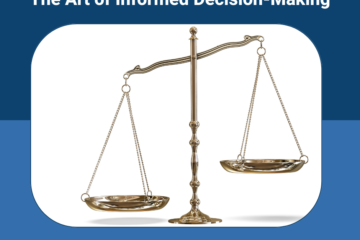
Introduction
In a world where everything wants our attention, we can’t say enough about how important it is to set priorities. If you don’t know how to set priorities, it can be hard to handle multiple jobs at work, keep up with your friends, and find time to improve yourself. This blog post will give you a deep dive into methods, strategies, and tools that can help you prioritize mindfully and successfully.
The Importance of Mindful Prioritization
When people hear the word “prioritization,” they often think of a simple to-do list where jobs are listed in order of how important or urgent they are. But putting things in order of importance isn’t as simple as this makes it sound. It has a part in mindfulness, which is paying attention to and being aware of what really counts in your personal and professional lives. Here, we explain the main benefits of setting priorities with care:
Focus on What Aligns with Your Long-Term Goals
Strategic Alignment: Mindful prioritization requires you to take a step back and ask the bigger questions: “What are my long-term goals?” “How does this task fit into my larger life plan?” and “Is this the best use of my time right now?” By doing this, you align your immediate actions with your long-term goals.
Resource Optimization: Time, money, and energy are all limited resources that can’t be made more of. By focusing on projects that help you reach your long-term goals, you can make sure that these resources are used in a way that will help you in the long run.
Increased satisfaction: When your daily actions are in line with your long-term goals, it gives even boring chores a sense of purpose and satisfaction, which makes the journey to your goals more fun.
Make Informed Decisions That Bring You Closer to Achieving Your Objectives
Informed Choices: When you set priorities with care, you make decisions based on how each job might affect your goals. With this information, you can make decisions that are not only convenient, but also help you reach your goals.
Risk Reduction: When setting priorities, it’s important to think about the possible outcomes, risks, and rewards of each job. With this kind of foresight, you can avoid possible problems and setbacks, making the road to your goals safer.
Time management: When you know what really matters, you can use your time more wisely, doing things that move you closer to your goals instead of things that don’t help you reach your goals.
Eliminate Tasks That Don’t Add Value to Your Life

Streamlining: One of the best things about mindful prioritization is that it helps you figure out which chores are “fluff” and don’t help you reach your goals or improve your well-being.
Increased Productivity: Getting rid of tasks that aren’t important gives you more time and mental energy, which lets you be more productive and focus on things that really matter.
Well-being: Tasks that aren’t necessary frequently lead to stress and burnout. By getting rid of them, you improve your mental health and give yourself more time to relax and recharge.
In conclusion, mindful prioritization is not just a way to organize your life; it is also a way to live a more focused, satisfying, and efficient life as a whole. It gives you the power to focus on what really matters, make choices that help you reach your goals, and stop doing things that don’t help you get there.
The Eisenhower Matrix: Urgent vs. Important
The Eisenhower Matrix is a tool that has been used for a long time. It is named after the 34th President of the United States, Dwight D. Eisenhower, who was known for how well he managed his time. This simple but effective grid uses two dimensions—urgency and importance—to help you organize and rank tasks. Here’s a deeper look at each area and why this method can help you decide what to do first:
Quadrant 1: Urgent and Important
Characteristics:
These are important jobs that need to be done right away. They need your immediate care and fit right in with your long-term goals or values.
For example:
Getting a project done on time, taking care of a health emergency, or fixing a major bug in software.
How to Approach:
Since these jobs are both important and need to be done quickly, you should put them at the top of your list. If you ignore them, bad things could happen. Use time-management tools like time-blocking to give these jobs specific blocks of time.
Quadrant 2: Important but Not Urgent
Characteristics:
These jobs are important for reaching your long-term goals, but you don’t have to do them right away.
For example:
Long-term planning, exercise, making new friends, and learning new skills.
How to Approach:
These tasks are important for your long-term success and well-being, but they are easy to put off when something more important comes up. Set aside time for these tasks, and don’t let the “urgent” tasks in Quadrant 3 take up the time you set aside for these important tasks.
Quadrant 3: Urgent but Not Important
Characteristics:
These are jobs that need your attention right away but don’t help you reach your long-term goals.
For example:
Answering texts that aren’t urgent, going to meetings that aren’t necessary, or dealing with small interruptions.
How to Approach:
If you can, giving these chores to someone else is the best way to handle them. If you have to do them yourself, give yourself a set amount of time or do them all at once to make the most of your time.
Quadrant 4: Neither Urgent nor Important
Characteristics:
These jobs don’t help you reach your long-term goals and don’t need to be done right away.
For example:
Mindlessly scrolling through social media, watching too much TV, or spreading rumors.
How to Approach:
These are the things you should try to get rid of or do less of. They are time-wasters and mental drains that don’t give anything of real value.
Why the Eisenhower Matrix Matters
Focused Effort: You can use your time and money more effectively if you know exactly what is urgent and important.
Strategic planning: The matrix makes you think about the long term, which helps you make sure that your current actions are in line with your bigger goals.
Stress Reduction: Knowing where to put your attention makes it easier to make decisions and cuts stress.
Time Optimization: When you divide your time based on a task’s quadrant, you optimize your plan for both immediate productivity and long-term success.
The Eisenhower Matrix provides a structured way to set priorities by putting jobs into groups in a systematic way. It helps you focus on what really counts, so you can take action right away and plan for the future.
The ABCDE Method

The ABCDE method is a way to set priorities that sorts jobs from “A” to “E” based on how important and urgent they are. This method was made to bring order to the often-chaotic process of managing tasks. It gives you a clear way to figure out what needs your attention first. Here’s how each group is broken up:
A: The most important tasks
Characteristics:
These are the things that must be done as quickly as possible. If you don’t, it could lead to bad things.
For example:
Getting a report in on time, finishing a job on time, or dealing with an emergency.
How to Approach:
Put all of your ‘A’ jobs at the top of your list of things to do. Make them your main priority and don’t do other things at the same time to make sure you give them your full attention. If you need to, you can decide the order of ‘A’ jobs (like A1, A2, and A3).
B: Important But Not Critical Tasks
Characteristics:
These tasks are important, but they don’t need to be done as quickly as ‘A’ tasks. If you put them off, it wouldn’t be a big deal right away.
For example:
Setting up a meeting next week that will be very important, and working on a project that is due in a month.
How to Approach:
Move on to the ‘B’ jobs once you’ve done all the ‘A’ tasks. Don’t let these get in the way of your ‘A’ jobs.
C: Nice-to-Do Tasks
Characteristics:
These jobs are neither very important nor very urgent. They would be nice to finish, but they don’t have to be.
For example:
Reading news about your field, making changes to your LinkedIn page, or cleaning up your workspace.
How to Approach:
Do ‘C’ jobs only after you’ve finished all ‘A’ and ‘B’ tasks. These jobs shouldn’t come before things that are more important.
D: Delegable Tasks
Characteristics:
These are obligations, but you are not required to fulfill them.
For example:
Routine office work, making plans, or running errands.
How to Approach:
Give these jobs to other people on your team, virtual assistants, or even automated systems so you can focus on more important things. Make sure they are done right by giving clear directions and deadlines.
E: Eliminable Tasks
Characteristics:
These jobs don’t help much or at all, so getting rid of them won’t hurt anything.
For example:
Meetings that aren’t needed, too much reporting, or old ways of doing things.
How to Approach:
Take these things off your list of things to do so you can focus on what really counts.
Why Should You Use ABCDE?
Clear Hierarchy: The ABCDE Method puts your jobs in order of how important and urgent they are, so it’s easier to know where to start.
Effective Delegation: You can focus on high-priority tasks when you know which jobs can be given to someone else.
Elimination of Non-Essentials: This method helps you find jobs that are neither urgent nor important and get rid of them, so you can focus on the most important things.
Simplified Decision-Making: The ABCDE system makes it easier to make decisions, so you don’t have to keep figuring out what’s most important all the time.
The ABCDE method gives you a complete framework for putting jobs in order of importance and urgency. It’s a simple but very effective way to organize your time and work to get the most done and have the most influence.
Time-Blocking: A Modern Approach
Focusing can be hard in a world full of messages, never-ending to-do lists, and constant interruptions. Time-blocking is a current way to organize tasks that works very well when combined with the Eisenhower Matrix or the ABCDE Method for figuring out what to do first. Here’s a detailed look at this method and what it can do for you.
What is blocking time?
Time-blocking means breaking up your day into specific chunks of time, or “blocks,” and giving each block to a certain job or group of tasks. Time-blocking is better than traditional to-do lists because it gives you both a list of jobs and a plan for when to do them.
How to Implement Time-Blocking
List Your Tasks: First, make a list of everything you need to do.
Prioritize: Use a method like the Eisenhower Matrix or the ABCDE method to decide in what order your jobs are most important.
Assign Time Blocks: Give each job a certain amount of time based on how important it is. For example, the first blocks of your workday could be given to the most important (or “A”) chores.
Stick to the Plan: Once you’ve made a plan with time blocks, try to follow it as much as possible. Set alarms or notes to let you know when a block of time starts and ends.
Change as needed: Things can go wrong that you didn’t expect. You should be able to move jobs around if you need to, but try to stick as much as possible to the original plan.
Benefits of Time-Blocking
Focus: Knowing exactly what you should be working on and for how long can help you focus and get a lot more done.
Work-life balance: If you carefully plan your workday, you are more likely to finish jobs on time, giving you time to do other things.
Reduced Procrastination: Sticking to a time-blocked plan makes it less likely that you will put things off. You have a plan to follow, which makes it easier to get things done.
Accountability: Blocking your time makes you answerable to yourself. When you give a job a certain amount of time, you promise to finish it within that time.
Complements Other Techniques: Time blocking is easy to combine with other ways to set priorities and get things done, making them more effective.
Examples of Time-Blocking in Action
Deep Work Sessions: Set aside two to three hours to work deeply and focused on a very important project.
Admin Blocks: Set aside shorter blocks for things like email and paperwork that are administrative.
Time for yourself: Don’t forget to schedule breaks, meals, and time for yourself.
Using time blocks helps you manage your time well and gives each job, no matter how urgent or important, the attention it needs. By combining this method with setting mindful priorities, you can have a balanced and productive job that protects both your performance and your health.
Software Tools for Prioritization
In our modern world, technology can be a great help when we’re trying to figure out how to prioritize jobs. Here are some software tools that can help you organize and prioritize your tasks:
Asana

Best For: Asana is particularly useful for team projects but is also a handy tool for personal to-do lists.
Features:
Give each team member a task with a due date and instructions.
Make different workspaces for each job.
Use “Timeline” to show project progress in a way that looks like a Gantt chart.
Tag chores and make them more important.
Why it helps you decide what to do first:
Asana lets you break up big projects into smaller jobs and subtasks that you can then organize in the right order. Because it lets people work together, everyone on the team knows what the project’s objectives are.
To-do list
Best for: People who want a simple, easy-to-use way to keep track of their jobs and to-dos.
Features:
Simple task entry with date parsing from natural language.
Projects and sub-projects help organize work.
How important jobs are.
Why it helps you decide what to do first:
Todoist is simple, so it’s easy to add jobs and sort them quickly. You can set up projects for different parts of your life or work and use importance levels to show what needs to be done first.
Trello:
Best for: People who think clearly and like to organize tasks with cards.
Features:
Use boards to show what your projects are.
Lists on boards can be used to show stages or groups of jobs.
Each job is written on a card in a list.
Move cards from one list to another to show progress or change what’s most important.
Why it helps you decide what to do first:
Because Trello is a visible tool, it is easy to see how a project is coming together as a whole. You can move cards around to change their priority quickly, add labels to give more information, and even use plugins to add more complicated scheduling and prioritization tools.
Each of these tools has its own set of features that make it useful for people with different needs and ways of setting priorities. Whether you’re a freelancer working alone, a busy parent, or a member of a big team, software tools like Asana, Todoist, and Trello can help you organize and prioritize your tasks more effectively.
Conclusion:
Prioritizing is not a one-time thing but a process that goes on all the time. Every day, life gives us new problems to solve, and our goals and dreams change over time. So, the art of setting goals is about making changes and re-evaluating your priorities often. With these tips and tools, you’ll be better able to keep track of your chores and time.



0 Comments